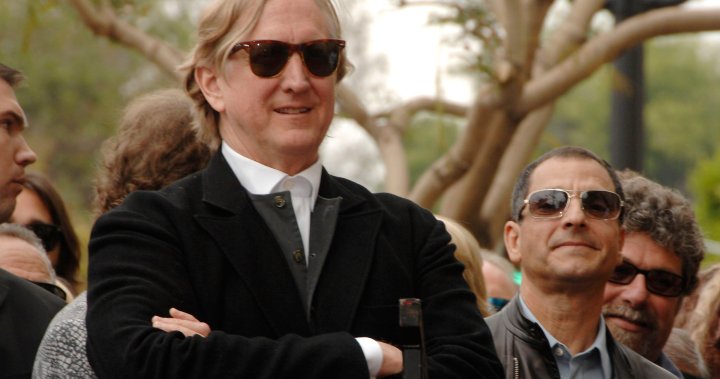
On June 21, 1948, Edward Wallerstein of Columbia Records, walked into a press conference at the Waldorf Astoria Hotel in New York with what looked like a collection of ordinary records under his arm. They looked a little bigger than the standard 10-inch 78 RPM records made of brittle shellac and limestone dust that had been the foundation of the recorded music industry since Emile Berliner demonstrated his gramophones 50 years earlier.
But these weren’t 78s. Wallerstein was there to introduce the brand new long-playing album, a 12-inch slab of polyvinyl chloride, a durable plastic invented by the B.F. Goodrich tire company in 1926 and originally used for sewer pipes. Using new precision lathe-cutter technology, very narrow grooves (.003 of an inch), each of these new records could comfortably hold 22 minutes of music per side as they spun at 33 1/3 times per minute. This was up significantly from five minutes that could fit on a 78. For the first time ever, an entire symphonic movement could be heard without interruption.
The LP changed everything about recorded music. RCA, Columbia’s archrival, initially balked at adopting the format and tried to compete with a microgroove format of their own: the 7-inch 45 RPM single. But after a marketing joust ended in a stalemate, the industry adopted both formats, a situation that we still have today.
There have been some upgrades to vinyl over the decades. Stereo recordings first appeared on vinyl in 1958. Half-speed mastering, something that promised higher fidelity, was hyped as the ultimate in sonic reproduction for a while and is still used today. Direct-to-disc was a fad that appeared in the 1970s and has mostly died out. Supersense was an interesting idea but ultimately impractical and expensive. And in the last 20 years, 180-gram vinyl has become the standard weight for records.
Beyond that, though, music-in-the-grooves-of-a-rotating-disc technology hasn’t changed since that day in New York City. The only other advances in analogue recording tech have come with magnetic recording tape (reel-to-reel tape in the 50s, and the 8-track and the cassette, both in the early 1960s). Since the debut of the compact disc in December 1982, the focus has been on preserving music through digital means. CDs and various digital file formats (the MP3 and its descendants) have been the only survivors of that transition. Does anyone remember the Elcaset? DAT? DCC?
Music reproduction through analogue means has been stuck in the same place for decades. Until now, apparently.
T Bone Burnett, the Grammy Award-winning American producer and guitarist with Bob Dylan’s band in the 1970s, is obsessed with analogue sound. He finds digital recordings cold, shrill, and generally sonically unpleasant. Listening to music on vinyl is much better, but it’s a 74-year-old technology and has its own drawbacks. If he was going to get the sound reproduction he craved, Burnett knew he’d have to invent something totally brand new.
Last week, Burnett presented Ionic Originals. It’s an aluminum disc painted with lacquer that holds a spiral groove that loops from the outside towards the centre. In other words, it’s a lot like a vinyl record. Pictures released by Burnett show him holding what looks like an oversized CD with grooves clearly visible on its surface.
But there are key differences between these Ionic Originals and old-school vinyl. I quote from the press release:
“An Ionic Original is the pinnacle of recorded sound. It is archival quality. It is future-proof. It is one of one. Not only is an Ionic Original the equivalent of a painting, it is a painting. It is lacquer painted onto an aluminum disc, with a spiral etched into it by music. This painting, however, has the additional quality of containing that music, which can be heard by putting a stylus into the spiral and spinning it.
“When describing the quality that raises analog sound above digital sound, the word ‘warmth’ is often used. Analog sound has more depth, more harmonic complexity, more resonance, better imaging. Analog has more feel, more character, more touch. Digital sound is frozen. Analog sound is alive.”
Burnett plans to market his new format through a new company called NeoFidelity Inc. The first release(s) will be some newly recorded Bob Dylan originals. Other than that, Burnett has left us short on details.

For example, how is this music recorded in the first place? One would assume that it’s laid down on analogue magnetic tape and then somehow transferred to the disc. But what’s the nature of this transfer? Can these discs be played on a standard turntable with a regular tonearm and cartridge setup? When will the general public be able to get their hands on one of these things? How much will they cost? And will any retailers devote shelf space to these things?
So far, we have no clue. But we should remember that the recorded music industry has its own graveyard of forgotten music formats and devices.
And surely Burnett learned something from the failure of Neil Young’s Pono, his high-resolution digital music device. Right?
—
Alan Cross is a broadcaster with Q107 and 102.1 the Edge and a commentator for Global News.
Subscribe to Alan’s Ongoing History of New Music Podcast now on Apple Podcast or Google Play
© 2022 Global News, a division of Corus Entertainment Inc.


